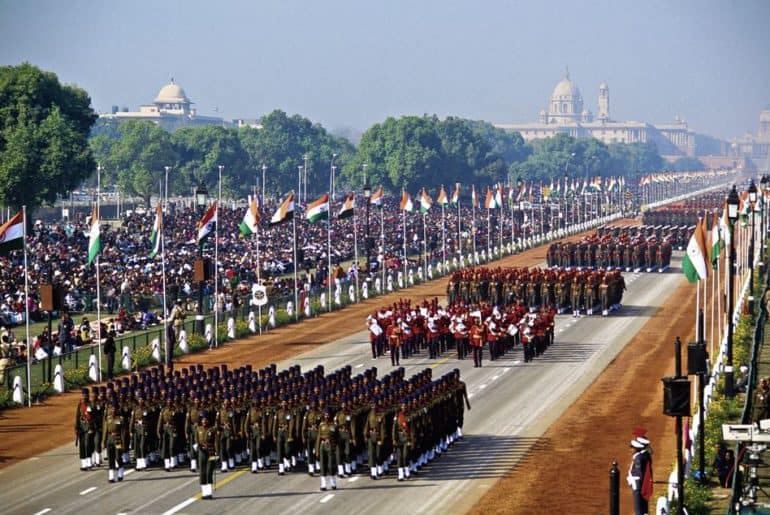India celebrates its 69th Republic Day on January 26, 2018. Let us ask the most pertinent question of all times – in all these years, have we remained faithful to the spirit of the Constitution of India?
It was the Lahore Session of the Indian National Congress at the midnight of December 31, 1929 and January 1, 1930, when the Tri-Colour flag was unfurled by the nationalists and a pledge was taken that every year on January 26, the ‘Independence Day’ would be celebrated with the people possessing a ceaseless desire for the establishment of Sovereign Democratic Republic India. The professed pledge was redeemed successfully on January 26, 1950, when the Constitution of India was framed by the Constituent Assembly after it conducted nuanced debates on the various aspects of Fundamental Rights, Duties, and Directive Principles. The Indian national image was given constitutional form on January 26, 1950. Many commentators consider the Indian Constitution a keenly nurtured fruit of the anti-colonial movement while others address it as the product of the extraordinary Constituent Assembly debates. Nationalism, as erratic and irrational it sounds , has been one of the paramount emotions to give steady form to the construction of nation-states. Such emotions may conjure the national community but they are impracticable for the micromanagement of affairs of people. The life of a community that has decided to constitute itself on the principles of equality and justice requires being enshrined in a written document. The Constitution acts as the ‘head’ to the ‘heart’ of the national emotion.
The Constitution has been called as the template of rational utopianism. But how much of its promise came into being after sixty-nine years? To what extent have we been able to realise the Constitution’s injunction of fair play?
Questions recur about the rightful limits of the judicial intervention in the legislative policy decision-making. With the four judges coming out in the media light to question the integrity of the Chief Justice, it clearly shows that the guardian of the Constitution, the judiciary, is in turmoil; the mounting backlog of cases and the appointment procedure only adding fuel to fire. There has always been an atmosphere of tensions and apprehensions about the preservation of institutional integrity whenever there is an absolute-majority government in power which can unilaterally tweak the constitutional provisions for the achievement of its sole objectives. Surely, landmark judgements like Right to Privacy and the Triple Talaq judgements have sustained the Constitutional order but the diminishing cultures of protest, debate, and dissent have infringed upon some of the ‘basic-structure-doctrine’ of the Constitutional freedoms and individual liberty. The makers of a movie have to publish a one-page advertisement to clarify the contents of their movie being in consonance with the whims of a particular community while religious fanaticism and majoritarianism are on the rise.
Since 1950, the numerous government administrations have tried to stick to the letter and spirit of the Constitution, but whenever the constitutional democracy is challenged by extremists, the people have united to restore the Constitutional rule-based order, for instance the JP Movements of the 70s against the Emergency Regime. Whenever our institutions are in decline, the unity of the people has filled in that void to ensure the true spirit of Constitution being sustained. This Republic Day, let us question our duties and whether we have been successful enough to fulfill the Constitutional goals while our modern day institutions are in decline.
Feature Image credits: TripSavvy
Oorja Tapan
[email protected]




Comments are closed.